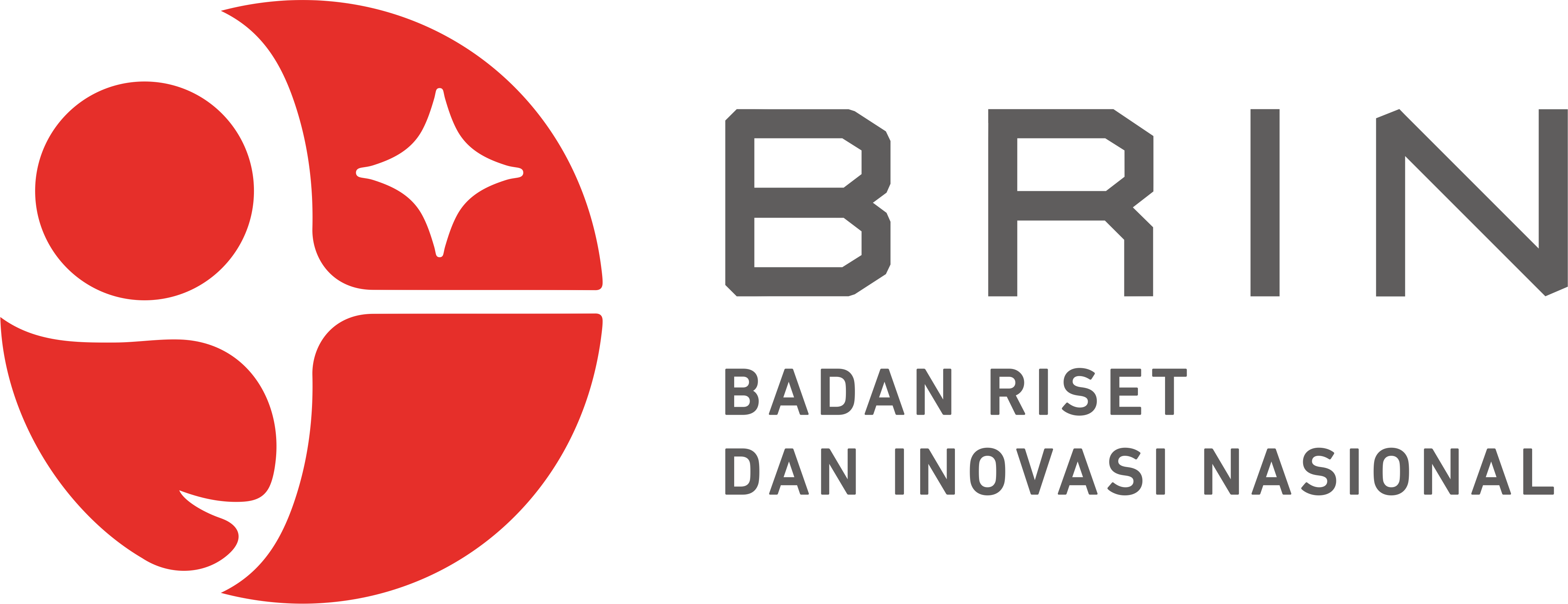EFEKTIVITAS ANTI-NYAMUK BAKAR ALAMI BERBAHAN TANGKAI BUNGA CENGKEH (Syzygium aromaticum L. Merr. & L.M. Perry) SERTA PERSEPSI MASYARAKAT TERHADAP PEMANFAATANNYA
Sari
Clove flower stalks (Syzygium aromaticum L. Merr. & Perry) are agricultural waste containing eugenol compounds, which have the potential to be natural active ingredients in mosquito repellent products. This study aims to describe the formulation process of mosquito repellent made from clove flower stalks, evaluate the effectiveness of burning time, and analyze public perception of its use. The method used is descriptive quantitative. The product is formulated from a mixture of clove flower stalk powder, adhesive (joss powder), and water with a ratio of 20 g: 6 g: 40 mL, molded in a spiral shape, and dried for 2-3 days. The resulting product has a dark brown color, a distinctive clove aroma, a smooth texture, a spiral length of 65 cm, a diameter of 11 cm, and an average weight of 21 grams, resembling the shape of synthetic mosquito repellent. The average burning time reaches 9.3 hours. Public perception of this product is relatively positive, especially in terms of aroma, color, and effectiveness in repelling mosquitoes. These findings indicate that clove flower stalks have the potential to be an alternative raw material that is effective, environmentally friendly, and acceptable to the community in the development of natural mosquito repellent products.
Kata Kunci
Teks Lengkap:
PDF (English)Referensi
Abubakar, M. G., & Hassan, L. G. (2007). Toxicological effects of some mosquito coils brands in experimental rats. Internet J Toxicol, 4, 1–6.
Akbar, M. (2015). Psikologi umum. Graha Ilmu.
Aliah, N., Susilawaty, A., & Ibrahim, I. A. (2016). Uji efektivitas ekstrak daun cengkeh (Syzigium Aromaticum) sebagai repellent semprot terhadap lalat rumah (Musca Domestica). HIGIENE: Jurnal Kesehatan Lingkungan, 2(3), 113–120.
Ayal, Y., Nindatu, M., & Ukratalo, A. M. (2021). Bioprospeksi Ekstrak Etanol Gagang Cengkeh (Syzogium aromatica) Sebagai Biolarvasida Nyamuk Aedes aegypti. Kalwedo Sains (KASA), 2(1), 7–14.
Budiman, B., & others. (2023). Efektivitas Minyak Limbah Daun Cengkeh (Syzigium aromaticum) Sebagai Biolarvasida dan Bioinsektisida Vektor Nyamuk. Universitas Hasanuddin.
Getas, D. R. S. I. W., Kristinawati, E., & others. (2021). Ekstrak Bunga Cengkeh sebagai Insektisida terhadap Mortalitas Nyamuk Aedes Aegypti Metode Semprot. Jurnal Penelitian Dan Kajian Ilmiah Kesehatan Politeknik Medica Farma Husada Mataram, 7(2), 161–168.
Harnani, E. D. (2010). Perbandingan kadar eugenol minyak atsiri bunga cengkeh (Syzygium aromaticum (L.) Meer. & Perry) dari maluku, sumatera, sulawesi, dan jawa dengan metode gc-ms. Universitas Muhammadiyah Surakarta.
Hasanuddin, A. R. P., Adam, A., & others. (2023). Effectiveness Test of Clove Flower Extract (Syzygium aromaticum) as an Insecticide Against Mosquito Mortality Spray Method: UJI EFEKTIVITAS EKSTRAK BUNGA CENGKEH (Syzygium aromaticum) SEBAGAI INSEKTISIDA TERHADAP MORTALITAS NYAMUK MENGGUNAKAN METODE SEMPROT. FASKES: Jurnal Farmasi, Kesehatan, Dan Sains, 1(3), 108–116.
Idris, M., Hamka, N., Kep, M., WOC, E. T. N., Chrisnawati, B. S. N., Fatimah, S., Pashar, N. I., Kep, M., & others. (2025). Dinamika Lahan Basah: Kesehatan, Pendidikan, dan Kebijakan. Uwais Inspirasi Indonesia.
Juniyanti, A. R., Retnaningsih, A., & Marcellia, S. (2021). Uji formulasi sediaan lotion dari ekstrak daun cengkeh (syzygium aromaticum l.) sebagai repellan terhadap nyamuk aedes aegypti. JOURNAL OF Pharmacy and Tropical Issues, 1(1), 27–35.
Kurawa, M. I. (2018). Detrimental Effects of Mosquito Coil Smoke Exposure on Memory and Hippocampal Morphology.
Luker, H. A., Salas, K. R., Esmaeili, D., Holguin, F. O., Bendzus-
Mendoza, H., & Hansen, I. A. (2023). Repellent efficacy of 20 essential oils on Aedes aegypti mosquitoes and Ixodes scapularis ticks in contact-repellency assays. Scientific Reports, 13(1), 1705. https://doi.org/10.1038/s41598-023-28820-9
Oktari, F., Ahyanti, M., & Yushananta, P. (2022). Analisis potensi ekstrak daun cengkeh (Syzygium aromaticum) sebagai repelen nyamuk. Ruwa Jurai: Jurnal Kesehatan Lingkungan, 16(2), 66–74.
Permatasari, Y., & Afida, I. (2023). Sosialisasi Dan Pelatihan Dasar Pengolahan Ekstrak Tanaman “Serai” Menjadi Ramuan Pengusir Nyamuk. Al-Ijtim{=a}: Jurnal Pengabdian Kepada Masyarakat, 4(1), 80–95.
Sudin, L. (2022). FORMULASI DAN EFEKTIVITAS CAIRAN PENGHARUM RUANGAN ANTI NYAMUK DARI EKSTRAK DAUN CENGKEH (Syzygium aromaticum L.). UNIVERSITAS KHAIRUN.
Suwaiya, A., & Lestari, I. (2020). Test the characteristics of essential oils of fragrant Lemongrass stems and clove leaves as an electric mosquito repellent. Journal of Natural Sciences and Mathematics Research, 6(1), 26–33. https://doi.org/10.21580/jnsmr.2020.6.1.11155
Taher, D. M. (2015, September 1). Potensi cengkeh (Syzygium aromaticum) varietas Afo sebagai larvasida alami nyamuk Anopheles subpictus dan Aedes aegypti. https://doi.org/10.13057/psnmbi/m010637
Yusmitaria, Y., Dewi, B., & Setya, E. R. (2020). FORMULASI DAN UJI EFEKTIVITAS SEDIAN LILIN AROMATERAPI (ANTINYAMUK) DARI MINYAK SEREH WANGI (Cymbopogon nardus L). Stikes Al-Fatah Bengkulu.
Zulaikha, A. P., Widyanto, A., & Widiyanto, T. (2019). EFEKTIVITAS BERBAGAI KONSENTRASI EKSTRAK DAUN CENGKEH (Syzygium aromaticum, L.) SEBAGAI REPELLENT TERHADAP DAYA HINGGAP NYAMUK Aedes aegypti. Buletin Keslingmas, 38(3), 297–304. https://doi.org/10.31983/keslingmas.v38i3.5399
DOI: https://doi.org/10.33387/bioedu.v8i1.9817
Refbacks
- Saat ini tidak ada refbacks.

This work is licensed under a Creative Commons Attribution-NonCommercial 4.0 International License.
















4.png)












